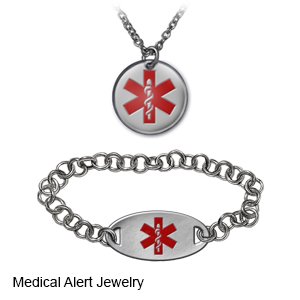Pacemaker Generator Change
Medically reviewed by Drugs.com. Last updated on Apr 6, 2025.
Your healthcare provider will replace your generator before the battery runs out. The generator may be replaced earlier if it stops working correctly.
DISCHARGE INSTRUCTIONS:
Call your local emergency number (911 in the US), or have someone call if:
- You have any of the following signs of a heart attack:
- Squeezing, pressure, or pain in your chest
- You may also have any of the following:
- Discomfort or pain in your back, neck, jaw, stomach, or arm
- Shortness of breath
- Nausea or vomiting
- Lightheadedness or a sudden cold sweat
- You feel lightheaded, short of breath, or have chest pain.
- You cough up blood.
Seek care immediately if:
- You feel weak, dizzy, or faint.
- Your stitches come apart.
- Your pulse is lower or higher than your healthcare provider said it should be.
Call your doctor or cardiologist if:
- You have a fever or chills.
- Your procedure area is red, swollen, or draining pus.
- You have questions or concerns about your condition or care.
Care for the incision area as directed:
Ask your healthcare provider when you can remove your bandage. Wash around the incision area with soap and water. It is okay to let soap and water run over the area. Do not scrub the area. Gently pat the area dry, and apply new, clean bandages as directed. Check every day for redness, swelling, or pus.
Activity:
Ask your provider how long to follow these and other safety precautions given to you:
- Do not lift anything heavier than 10 pounds, or as directed.
- Do not lift the arm closest to your pacemaker over your head.
- Do not put pressure on the pacemaker area.
- Do not play contact sports or do vigorous exercises. These activities can damage your pacemaker or cause the wires to move. Ask your healthcare provider which activities are safe for you to do.
Pacemaker safety:
- Tell all healthcare providers that you have a pacemaker. MRI machines and certain equipment used during surgery can affect how your pacemaker works.
- Stay away from magnets or machines with electric fields. These can interfere with how your pacemaker works. You will get specific safety information based on the type of pacemaker you have. The following are general safety guidelines:
- Do not lean into a car engine or do welding.
- Do not use an electronic body fat scale or electronic abdominal stimulating exercise machine.
- Check before you have a CT scan. Some CT scan machines may be safe to use with your pacemaker.
- Check before you have electrolysis for hair removal. Your provider may give you instructions on how to get this procedure safely. He or she may need to give you written permission before you can get electrolysis.
- Check before you use a medical alert system, or let your company know you have a pacemaker. The company will be able to tell you if a pacemaker is safe to use with the system.
- Avoid or limit time around electric fence systems. This also includes electric systems to keep pets in a small area. If you cannot avoid it, make your time near it as short as possible.
- Keep your cell phone away from your pacemaker. Do not place your cell phone in a breast pocket over your pacemaker site. Use your cell phone with the ear on the opposite side from your pacemaker.
- Keep headphones away from your pacemaker. Earbud and clip-on headphones for MP3 players might interfere with your pacemaker. Make sure your headphones are always at least 6 inches away from the pacemaker. Do not put headphones in your shirt pocket over the pacemaker. Do not let the headphones hang from your neck onto your chest. Do not let anyone who is using headphones put his or her head on your chest.
- Tell airport security that you have a pacemaker before you go through the metal detectors. Metal detectors may beep because of the metal in your pacemaker. Step away from the machine if you feel dizzy or your heart rate increases. Ask the security agents not to hold a security wand over your pacemaker for more than a few seconds. Your pacemaker function or programming may be affected by the wand.
- Wear medical alert identification. Wear medical alert jewelry or carry a card that says you have a pacemaker. Ask your healthcare provider where to get these items.

Follow up with your doctor or cardiologist as directed:
You will need regular checks to make sure your pacemaker is working correctly. Write down your questions so you remember to ask them during your visits.
© Copyright Merative 2025 Information is for End User's use only and may not be sold, redistributed or otherwise used for commercial purposes.
The above information is an educational aid only. It is not intended as medical advice for individual conditions or treatments. Talk to your doctor, nurse or pharmacist before following any medical regimen to see if it is safe and effective for you.
Further information
Always consult your healthcare provider to ensure the information displayed on this page applies to your personal circumstances.
